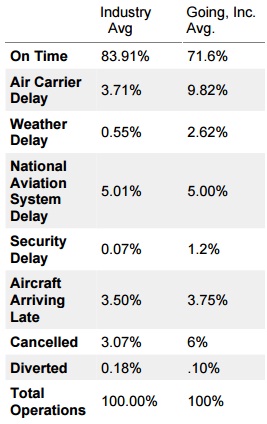Many staff in the airline service end feels they are overtaxed while others seem to have little to do. choosing one - two roles from among the following: cleaning crew, ramp agents, provisioning agents, reservation sales agents, customer service agents, pilots, and mechanics.
Write a proposal that would meet the need for service productivity and greater operational success for their specific role. Consider changes or strategies specific to the job in job requirements, training, staffing, and job design. Use the Library for ideas in the airline industry and beyond to consider job significance, job identity, autonomy, staffing, feedback, job rotation, enrichment, employee empowerment, job enlargement. Explain what cautions, methods, or requirements are needed for any proposed changes to meet ethical and legal standards for managing employees.
Need three key proposals or strategies for each chosen role which would make the biggest coordinated difference in Going's operational success.
Service Division:
Mission Statement: Become the most successful provider of airline transport for the business traveler.
Marketing Slogan: “High society in the air”
Going, Inc.’s airline service has been losing business in regular service operations for 20 months now and is saddled with low performance in on-time delivery, baggage handling, and overall customer service. Several outside consultants have viewed these three areas for short-term fixes that could quickly improve the bottom line, but perhaps even more drastic steps are needed.

Going's competitive strategy is now questioned by company executives because many previous business traveling customers are now seeking a less expensive air travel solution. Ten areas of operations strategy have been identified for study to gain a competitive advantage.
1. Service Design Strategy:
a. Going, Inc. mainly serves long routes across the United States and international routes into Europe and Asia. It is also seeking new South America routes.
b. The company emphasizes in-flight service to its business and first-class passengers.
c. The company has been slow to adapt to the Internet, offering only general information about its airline on the company homepage.
2. Quality Management Strategy
a. The company has been content with average customer satisfaction rankings until the recent downturn in business.
b. The company concentrates its efforts toward the big budget frequent flyer and seeks to ensure top quality over other airlines in first and business class service.
Numerous frequent flyer programs and marketing materials are sent to target customers.
3. Process and Capacity Strategy:
a. The company owns many different commercial airplanes in its fleet-presently seven different models from two manufacturers (AirDyno and Cosnot).
b. Full meals are offered on all flights, and in-flight meal customization, designed to give the meal service a “Going, Inc. flair,” is performed on each flight at the flight attendant stations. This includes folding napkins into the trademark Going, Inc. symbol, adding a Going, Inc. pen to the tray, and inserting a small Going, Inc. flag to the flower vase on each tray.
4. Location Strategy:
a. Going, Inc. flies to all major cities and every state but rarely more than once per day (other than hub cities).
b. The company has a major hub in the East (JFK, New York), Central (O’Hare, Chicago), Mid-West (Denver) and West (LA) regions.
5. Layout Strategy:
a. Going, Inc. gates are located at the best locations (closest to the terminal).
b. Going, Inc. boards its planes with first-class passengers and then by first-come, first-serve.
6. Human Resources, Job Design Strategy:
a. The company does not have the best relationship with its unions. Minimal pay increases and hiring over the last 3 years has created a chasm between the two parties. Pilots frequently fly right up to their legal limit.
b. Employees have complained about lack of a voice and lack of up-to-date training programs.
c. After each flight, cleaning crews must go through each aisle, flight attendant station, and lavatory. Due to the number of models in the fleet, the cleaning cycle time is comparatively slow and contributes heavily to the poor air carrier delay
performance.
7. Supply Chain Management:
a. Going, Inc. has a very elongated supply chain, serving four major hubs in the US.
b. Going, Inc. has what can be termed has a lukewarm relationship with AirDyno, one of the company airplane suppliers, due to some past financial issues and a lack of support on AirDyno’s part in supplying replacement parts.
c. The company maintains 4 models from AirDyno and 3 models from Cosnot, relying on each to supply replacement parts.
8. Inventory Management:
a. The company’s maintenance department must be exceptionally managed due to the number of models of planes in its fleet. Maintenance stations are located at each hub location, with a central larger facility at the airline’s Denver hub.
9. Scheduling Strategy:
a. Going, Inc. has 225 inland destinations and flies to every state in the US on its schedule on top of its Europe and Asia routes. For comparison, Southwest Airlines serves 53 airports in 27 US states.
b. Data demonstrates that Going, Inc. is higher than the industry standard in air carrier delay and connecting aircraft late arrival.
10. Maintenance and Reliability Strategy:
a. Going, Inc. has experienced higher costs in maintenance, repair, and training in the last 2 years.
b. Going, Inc. airplanes are grounded or in repair and maintenance 18% more than the industry average.